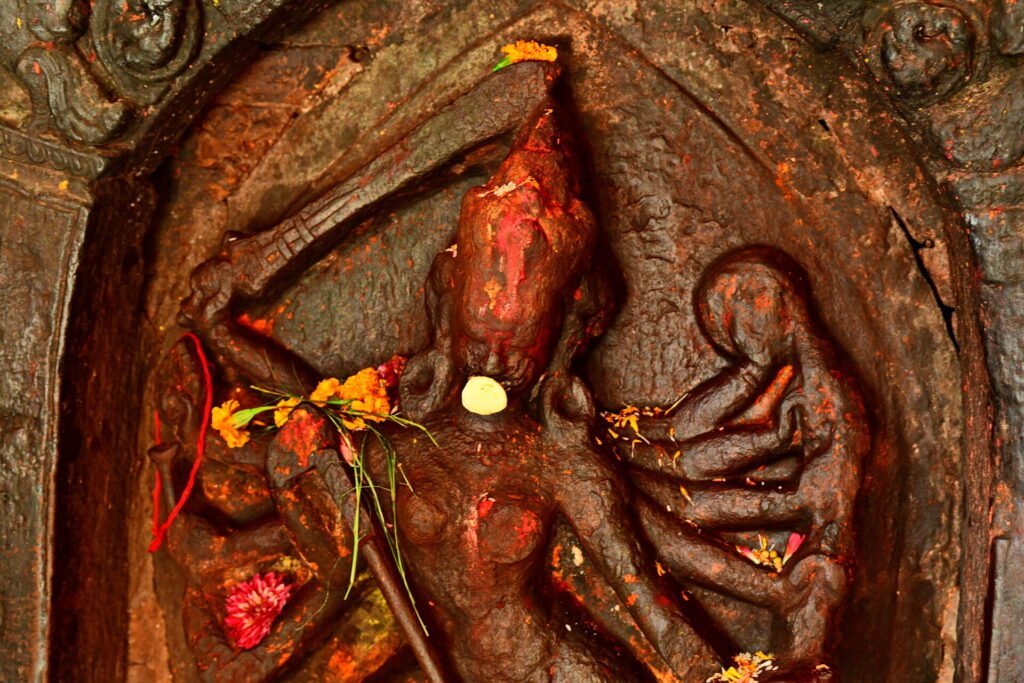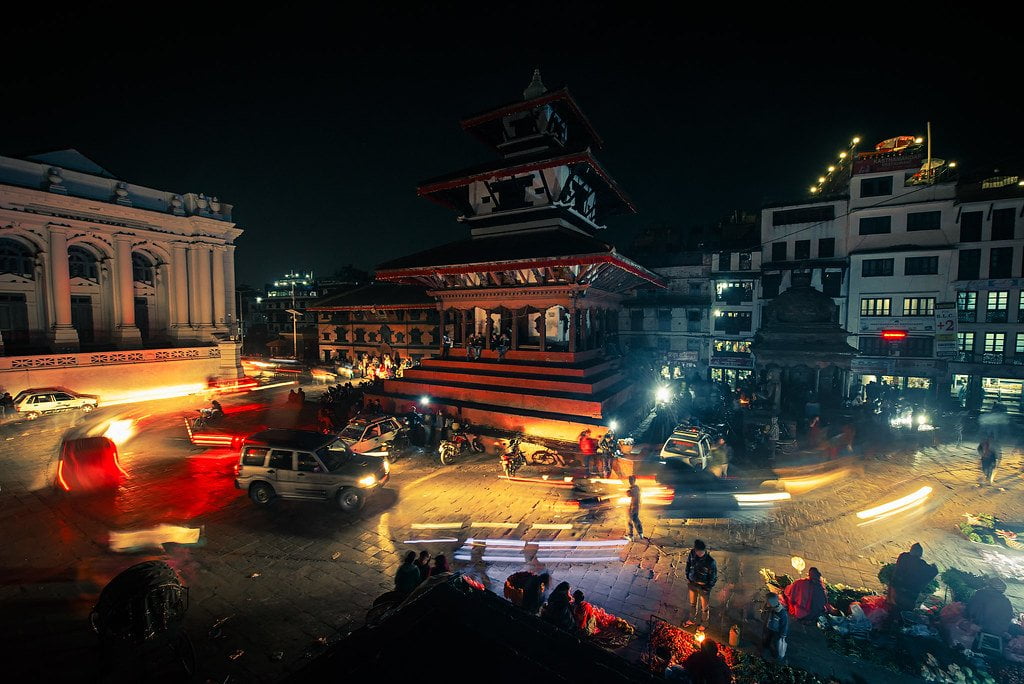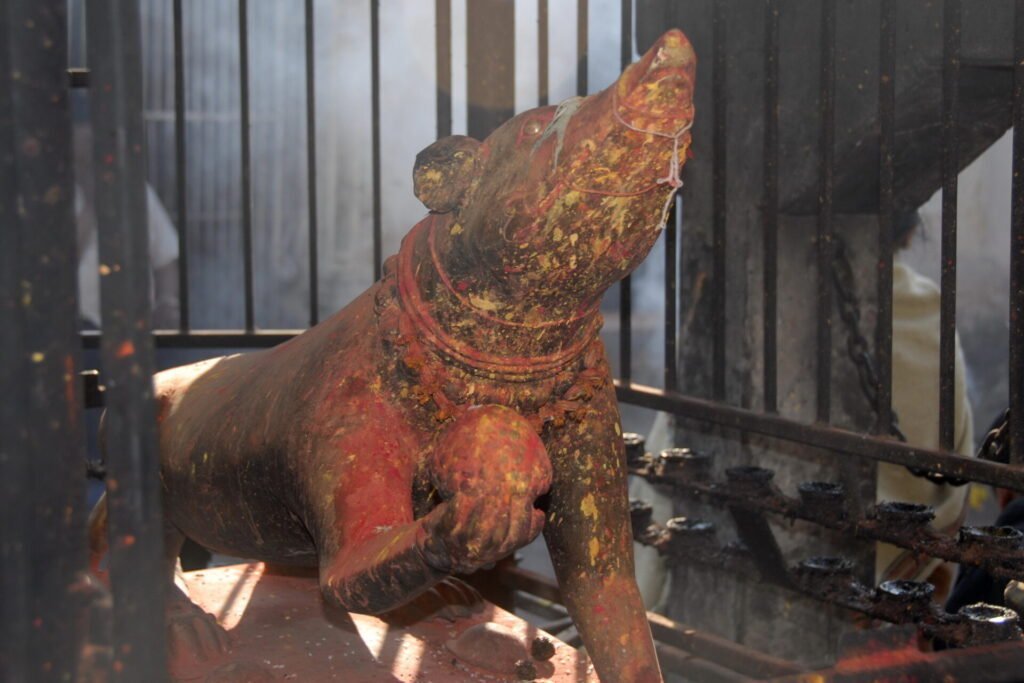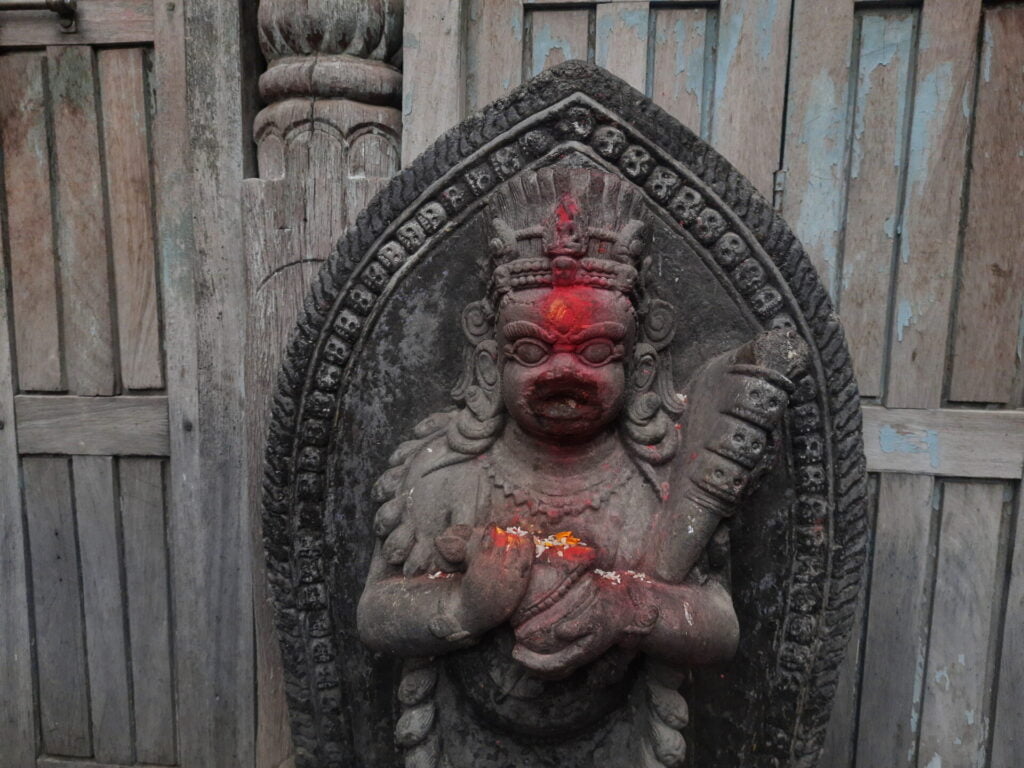Maru Tole: Navigating the Neighborhood
Maru Tole, situated in the historic neighborhood of Hanuman Dhoka Durbar world heritage monument zone, is a vibrant and bustling area in Kathmandu, Nepal.
One of the prominent landmarks in Maru Tole is the iconic Kasthamandap temple. This ancient wooden structure holds great cultural and religious significance for the local community. Devotees and tourists alike visit Kasthamandap to partake in daily and occasional puja rituals, observe jatras and festivals, and experience the spiritual ambiance that permeates the premises. The temple is meticulously maintained and restored by the active involvement of two main guthis, Chatan Guthi and Sa Guthi, who also organize various cultural activities.
The immediate community surrounding Kasthamandap is the residents of Maru Tole. These individuals, living in a neighborhood steeped in history, contribute to the unique charm and character of the area. As visitors explore the streets of Maru Tole, they will witness ordinary street views that offer a glimpse into the daily lives of the local residents. The bustling atmosphere, coupled with the architectural beauty of the buildings, creates a captivating experience for all who wander through the neighborhood.
Maru Tole is centrally located in one of the busiest areas of Kathmandu, attracting people from all corners of the Kathmandu valley. Whether it is for shopping, morning worshipping rituals, or simply soaking in the vibrant atmosphere, individuals from across the city find themselves associating with Kasthamandap and its surrounding neighborhood. Its strategic location makes Maru Tole easily accessible, ensuring that visitors and residents alike can immerse themselves in the rich cultural tapestry that the area has to offer.
One notable attraction within Maru Tole is the Ashok Binayak Temple. Devotees flock to this sacred site, particularly on Tuesdays, which are considered especially auspicious for seeking blessings. The temple courtyard becomes alive with devotees, offering prayers, lighting incense, and presenting laddus – sweet balls – as offerings. The atmosphere is filled with heartfelt devotion and a sense of spirituality that is palpable to all who visit.
Maru Tole derives its name from an interesting local tale. The absence of a gajur – a decorative ornament – is said to have inspired the naming of the neighborhood, with “Maru” in the Newar language translating to “without.” This absence serves as a subtle tribute to the missing ornament and adds to the allure and intrigue of the area.
History of Maru Tole
The history of Maru Tole can be traced back to ancient times when Kathmandu Valley was divided into different kingdoms. It is believed that Maru Tole was established during the Licchavi period, which spanned from the 3rd to the 9th century. The Licchavis were an influential ruling dynasty in Nepal, known for their patronage of arts and architecture.
Maru Tole served as an important trade and commerce center during the Licchavi period. Traders from different parts of the valley would gather here to exchange goods and conduct business. The neighborhood thrived as a bustling marketplace, attracting merchants from far and wide.
Over the centuries, Maru Tole has witnessed various dynasties come and go, each leaving its mark on the architecture and culture of the area. The Newar community, indigenous to the Kathmandu Valley, played a significant role in shaping Maru Tole’s identity. The Newars are known for their craftsmanship and have contributed immensely to the unique architecture and intricate woodwork seen in the area.
Today, Maru Tole continues to be a vibrant and dynamic neighborhood, bustling with activity. It is home to numerous shops, restaurants, and cultural attractions that attract both locals and tourists alike. The preservation and restoration of its historical buildings and traditions remain a priority, as Maru Tole stands as a testament to the rich heritage and history of Kathmandu Valley.

Festivals and Events in Maru Tole
One of the highlights of Maru Tole is its role as a venue for religious festivals. Throughout the year, this square becomes the center of celebration, attracting both locals and tourists alike. One such prominent festival is the Indra Jatra, which takes place in September. This week-long festival is dedicated to Lord Indra, the king of heaven and the god of rain, and is marked by colorful processions, masked dances, and the pulling of chariots. The lively atmosphere and cultural performances during Indra Jatra create a truly mesmerizing experience for visitors.
Another significant festival celebrated in Maru Tole is the Bisket Jatra, which falls in April. This festival marks the Nepali New Year and is known for its thrilling chariot procession and the famous tug-of-war game between different communities. The vibrant energy and enthusiasm displayed during Bisket Jatra make it one of the most anticipated events in the city.
Apart from religious festivals, Maru Tole is also known for its market square. The area comes alive with the Maru Tole Festival, held annually, where local artisans and craftsmen showcase their traditional products. Visitors can explore a variety of handicrafts, textiles, pottery, and jewelry, making it a perfect opportunity to immerse oneself in the local culture and take home unique souvenirs.

Durbar Square and Temple Complexes
Durbar Square, located in Maru, Kathmandu, is an iconic cultural site that holds immense historical and religious significance. This square forms part of the old royal palace complexes, which include Kathmandu Durbar Square, Patan Durbar Square, and Bhaktapur Durbar Square, collectively declared UNESCO World Heritage Sites. These palace complexes are characterized by their exquisite temples, shrines, and palace buildings, reflecting the rich architectural and artistic heritage of Nepal.
Durbar Square is not just a tourist attraction but also a vibrant center for religious and cultural activities. It serves as a venue for religious festivals and ceremonies, bringing together people from different communities and backgrounds to celebrate their shared heritage. The square is a testimony to the deep-rooted religious traditions and practices that have been passed down through generations.
The temple complexes within Durbar Square are particularly noteworthy. These temples, dedicated to various Hindu deities, are architectural marvels adorned with intricate carvings, exquisite artwork, and elaborate pagoda-style roofs. Each temple has its unique significance and serves as a place of worship and devotion for the local community. The temples also attract pilgrims from all over the world who seek spiritual solace and seek blessings from the deities.
One of the prominent temple complexes in Durbar Square is Kasthamandap. This reconstructed three-storied public shelter is not only a significant architectural landmark but also houses a shrine consecrated to Gorakshanath. Kasthamandap is a revered place of pilgrimage for devotees who come to pay their respects and seek blessings.
Durbar Square and its temple complexes are not just architectural wonders but also embody the social and cultural fabric of Kathmandu. They represent the historical legacy of the city and serve as a reminder of its glorious past. The preservation and restoration of these sites are of utmost importance to ensure that future generations can continue to appreciate and learn from the rich cultural heritage they embody.

Ashok Binayak and Jal Binayak Temples
The Ashok Binayak Temple, located in the heart of Kathmandu, invites visitors with its unique architectural charm. Unlike its grandiose counterparts, this one-story temple captivates with its simplicity and golden-plated facade that glows under the sunlight. Step inside, and you will be greeted by the graceful statue of Lord Ganesh, seated in the innermost sanctum. The absence of towering gajurs adds to its tranquil ambiance, making it a space of serenity and peace.
Believed to have been built between the 5th and 8th centuries AD, the Ashok Binayak Temple holds centuries of prayers, dreams, and hopes within its sacred space. Hindus and Buddhists alike find comfort and a personal connection with the remover of obstacles here. Tuesdays, in particular, are Ganesh-day, when the air is filled with chants and prayers seeking blessings for success, new beginnings, and triumph over challenges.
Just a short distance away lies the Jal Binayak Temple, another spiritual gem in the Kathmandu Valley. This temple, dedicated to Lord Ganesh, is known for its unique association with water. The name “Jal Binayak” translates to “Ganesh of Water,” and it is believed that pouring water over the idol of Lord Ganesh brings good luck and blessings.
As you approach the Jal Binayak Temple, the sound of flowing water adds to the tranquility of the surroundings. The temple’s architecture is reminiscent of ancient Nepali pagodas, with its tiered roofs and intricate woodwork. The idol of Lord Ganesh sits majestically amidst a serene atmosphere, surrounded by devotees seeking his divine grace.
Both the Ashok Binayak and Jal Binayak Temples offer a pilgrimage experience for all. Whether you are a devoted Hindu yearning for divine blessings, a curious traveler seeking ancient mysteries, or simply someone in search of a moment of reflection, these temples welcome everyone with open arms.

Accommodations in the Neighborhood
For visitors seeking to immerse themselves in the rich cultural tapestry of Maru Tole, there are various accommodation options available in and around the neighborhood. Whether you prefer the comfort of a boutique hotel or the charm of a traditional guesthouse, Maru Tole and its vicinity offer a range of lodging choices to suit different preferences and budgets.
One popular type of accommodation in the area is the traditional Newari guesthouse. These guesthouses, often adorned with intricately carved windows and doors, provide a unique and authentic stay experience. Guests can look forward to well-appointed rooms, personalized hospitality, and a glimpse into the local way of life. The proximity to Maru Tole’s attractions and the opportunity to interact with the friendly locals make staying at a Newari guesthouse a memorable and culturally enriching experience.
For those seeking modern amenities and convenience, there are boutique hotels and lodges situated within a short walking distance from Maru Tole. These establishments offer comfortable accommodation, contemporary facilities, and personalized service, catering to the needs of discerning travelers. Many of these properties also boast rooftop terraces or dining areas that provide panoramic views of the neighborhood and nearby cultural landmarks, allowing guests to soak in the vibrant atmosphere of Maru Tole.
In addition to traditional guesthouses and boutique hotels, there are also options for budget travelers, including backpacker hostels and guest lodges. These accommodations provide affordable yet comfortable stays, often attracting a diverse mix of local and international guests. The communal spaces and organized activities at these establishments create a conducive environment for socializing and meeting fellow travelers, making them an ideal choice for those seeking a lively and communal experience during their visit to Maru Tole.
Whichever accommodation option visitors choose, staying in or near Maru Tole affords them the opportunity to explore the neighborhood’s cultural heritage, culinary delights, and vibrant street life with ease. The range of accommodations available ensures that every guest can find a place to call home while they uncover the hidden gems of this historical and bustling Kathmandu neighborhood.

